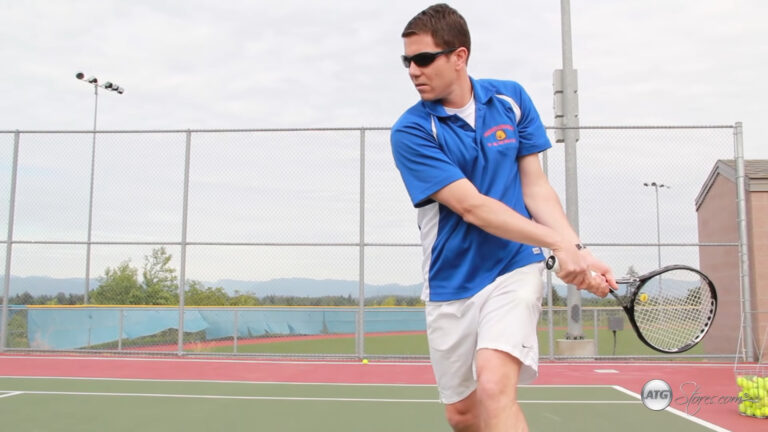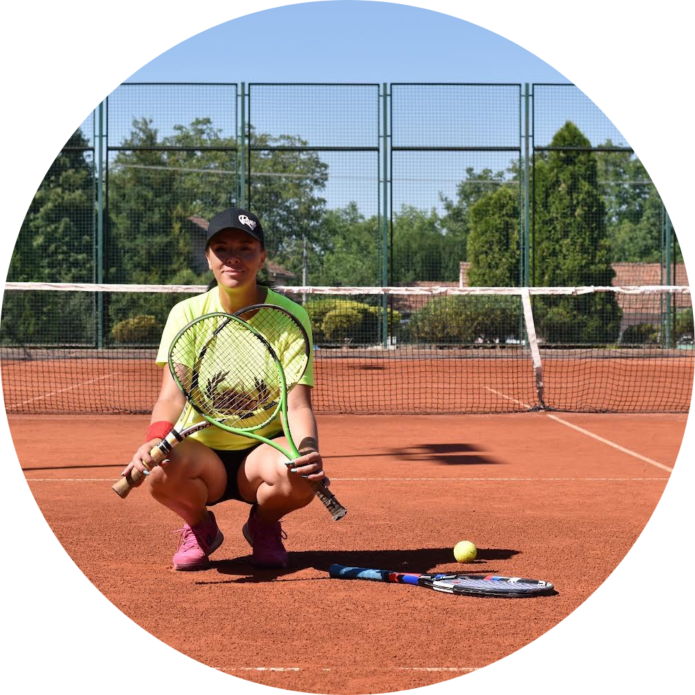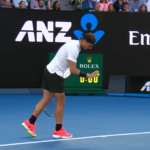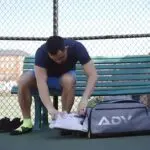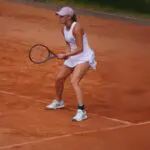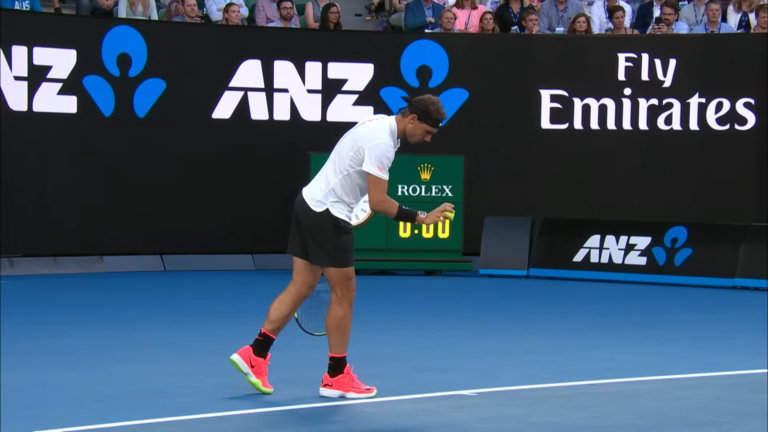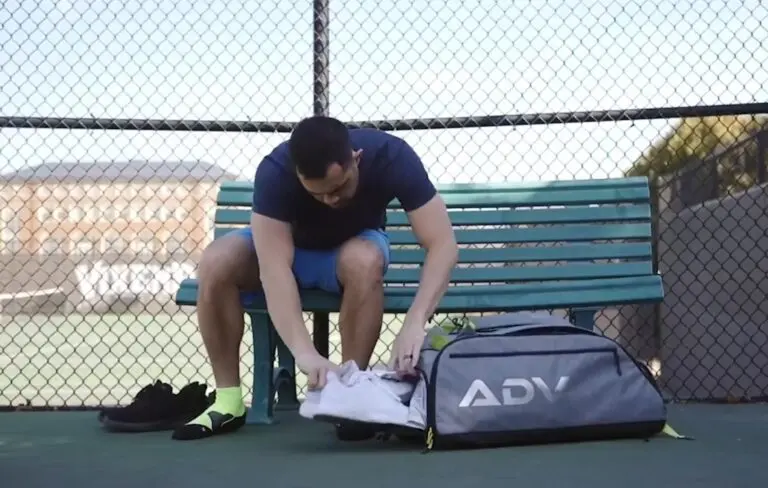Capitalizing on the opportunities to master tennis techniques and skills is essential to the advancement of tennis player’s game. In this sport, every tennis athlete develops a unique style of game play that empowers his or her strengths.
The development of such strengths are vital to the progression of an athlete’s game, but at times these strengths can expose weaknesses when playing experienced competitive athletes in the game of tennis.
Experienced competitive athletes are crafty in recognizing faults in an opponent’s tennis techniques and will take advantage of the opportunities to dominate the situation.
Typically, this frustrates defeated players often resulting personal displays of disappointment and confusion. No one likes to lose, so everyone can understand an athlete’s disappointment in a loss.
On the other hand, confusion can develop for a number of reasons. This is where serious competitors gravitate back to fundamental tennis techniques and skills in an effort to improve on their weaknesses as well as sharpen their strengths.
Mastering the basic tennis techniques, builds a solid tennis foundation. Let’s compare this fact to a house. All houses are built on a foundation.
The foundation is the base that maintains the structure of the house. Without a foundation a house is not built. If anything alters the foundation, the structure weakens and at times fails to maintain its stability. At this point repairs are required to stabilize the foundation and strengthen the structure.
Similarly, the sport of tennis is built on a foundation of basic techniques and skills. Mastering these basic tennis techniques and skills is one of the first steps to succeeding in the sport.
Without the foundation of these fundamentals, an athlete generally defaults to failure in the game of tennis. If any of these basic tennis techniques and skills are not tuned up regularly, an athlete’s game is vulnerable against a strong competitor. I think you get the point.
To build a solid foundation, a player must practice regularly and strive to master six fundamental tennis strokes. Every point played will require one, two, or all of these strokes throughout a game, set, or match.
These six fundamental tennis strokes are the essential tennis techniques and skills necessary to succeed in the game of tennis.
The Six Fundamental Tennis Strokes
Tennis Forehand: The tennis forehand is the ‘meat and potatoes’, or the ‘money shot’ for the majority of tennis athletes. It is not necessarily the easiest stroke to learn, but it is the most natural. To visualize a tennis forehand, picture this for a moment.
Lets assume you are left-handed. If you are playing tennis and an opponent returns a tennis ball directly to your body, your natural instincts would be to step to your right and hit it back from the left side of your body.
However, if you are right-handed and an opponent returns a tennis ball directly to your body, your natural instincts would be to step to your left and hit it back from the right side of your body.
The majority of tennis players prefer to execute a forehand more than any other fundamental tennis stroke. In fact, the majority of tennis strokes executed in a game, set, or match are forehands.
Tennis Backhand: The tennis backhand is executed from the side opposite of the forehand side. So if you are right-handed, your backhand is executed from the left side of your body and if you are left-handed, your backhand is executed from the right side of your body.
In order to execute a tennis backhand, you must bring your natural hitting hand around your body before hitting the tennis ball. The tennis backhand may seem awkward at first, but as you practice and familiarize yourself with this stroke it will become a welcomed alternative to the foundation of your tennis techniques and skills.
Tennis Serve: The tennis serve initiates every point. The tennis player that is serving is termed the server and the other tennis player is termed the receiver. By rule, you can opt to serve anyway you see fit, it is your choice.
Technically though, competitive tennis players achieve and maintain the most effective results by tossing the ball straight up high above the head while rotating the tennis racquet with a full motion swing aiming to strike the ball to the diagonal service area on the opposite end of the tennis court.
Tennis Lob: Uniquely termed in tennis, the lob is mainly used as a defensive technique to turn the momentum of a point into an offensive play. Did that make sense? Let me attempt to clarify.
What is a lob? A lob is a high arching shot with additional hang time that is initiated by a forehand, backhand, or at times a volley. With the lob technique, a tennis competitor has the ability to change the course of a point and keep an opponent off balance during game play.
As a competitor, your goal is to win each an every point. From time to time tennis athletes find themselves out of position or vulnerable during game play. This is when the lob technique comes in handy and can change the direction of that point.
By launching a lob with precision and excellence, a competitor can now gain and take control of that point. The presence of the lob keeps an opponent guessing instead anticipating the predictable forehand or backhand ground strokes.
Master the lob as a defensive and offensive tennis technique to gain an advantage. In other words, lob at will to win a point.
Tennis Overhead: Similar to a serve, the overhead tennis technique is designed to earn points by striking the tennis ball as it floats in the air over the head to the forehand or backhand side of a tennis athlete’s body. Generally, this is the response to an unsuccessful lob attempt where the tennis competitor that initiated the lob pays dearly.
Think of this performance as a slam dunk in basketball or a spike in volleyball where tennis athletes have deliberately term this action as an overhead smash or smash for short.
A great overhead smash technique generates an intimidating dominating effect as it can demoralize and grant you an advantage over a frustrated opponent.
Tennis Volley: Simply put, the volley is a short punch technique with little or no back swing from a tennis athlete’s forehand or backhand side. If you are the type of player who enjoys going on the attack to instigate fast-paced action, the volley is probably one if not your favorite tennis skill that intensifies your game.
Other than a serve or an overhead, every shot a player executes before the ball bounces on the court is considered a volley. This skill is frequently attempted as a reaction to an out-of-position jam where a tennis athlete is unable to play the bounce.
Most of the time though, the volley is habitually played as an attack approach near the net where a skilled tennis athlete has considerable options to win points due to the ease of angling shots and clearing the net.
As stated earlier, every point played will require one, two, and at times all these fundamental tennis strokes throughout a game, set, or match.
Tune them up regularly to advance your game and to reduce negative plays. Deviate from this action and chances are you will pay the price especially in competitive tennis tournaments.
So set a goal, train with a purpose, and strive to master these fundamental tennis techniques.
Related:
- 20 Best Tennis Shoes 2024 - Stylish and Athletic
- Top 19 Best Tennis Bags 2024 [Unbiased Reviews]
- 18 Best Tennis Racquets 2024 - Exclusive Reviews &…
- 15 Best Tennis Balls 2024 - USTA and ITF Approved
- 10 Best Tennis Ball Machine 2024 - Perfect for Solo Players
- 13 Best Tennis Shoes for Clay Court 2024 - Improve…

